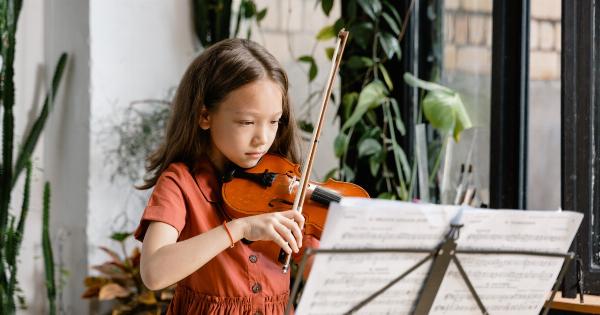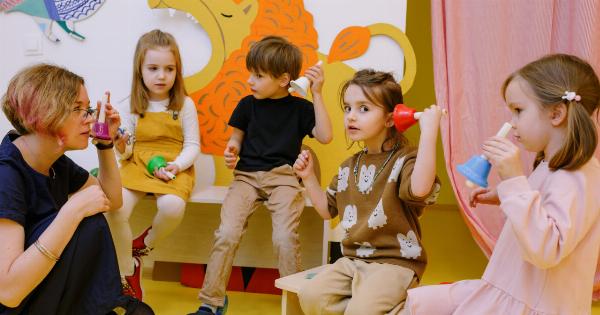The notion that happy kids can only come from a specific family style is a common misconception in society.
Many people believe that children can only experience happiness if they come from a traditional nuclear family with a mother, father, and siblings. However, research and real-life experiences have shown that happy kids can come from any family style, regardless of its structure or composition. In this article, we will explore different family styles and their impact on a child’s happiness.
We will also delve into the factors that contribute to a child’s happiness and how they are influenced by their family environment.
The Traditional Nuclear Family
The traditional nuclear family, consisting of a married heterosexual couple and their biological children, has long been considered the ideal family style in many societies.
However, it is important to note that the key factor contributing to a child’s happiness is not the structure of the family, but rather the presence of love, support, and healthy relationships within that family. If a child grows up in a traditional nuclear family where these elements are present, they are likely to be happy and well-adjusted. However, the absence of a traditional nuclear family does not necessarily mean that a child cannot be happy.
Single-Parent Families
Single-parent families, where one parent takes on the primary caregiving role, are increasingly common in today’s society.
This family style can be the result of divorce, separation, the death of a parent, or a deliberate choice made by an individual to become a single parent. Despite the challenges that single-parent families may face, research has shown that children from these families can be just as happy as those from traditional nuclear families.
The presence of a loving and nurturing parent, as well as a strong support system, can greatly contribute to a child’s happiness and well-being.
Blended Families
Blended families, also known as stepfamilies, occur when two individuals with children from previous relationships come together and form a new family unit. This family style brings its own unique set of challenges and dynamics.
However, when blended families are characterized by open communication, respect, and a supportive environment, children can still experience happiness and fulfillment. It is essential for all family members to work together to establish healthy relationships and create a sense of belonging for everyone involved.
Same-Sex Parent Families
Same-sex parent families are becoming more prevalent in today’s society, as societal attitudes towards LGBTQ+ individuals continue to evolve.
Research has consistently shown that children raised by same-sex parents can thrive and be just as happy as those raised in heterosexual families. It is not the gender or sexual orientation of the parents that affects a child’s happiness but rather the quality of the parent-child relationships, the presence of love and support, and the overall family environment.
Adoptive Families
Adoption is another family style that can provide a loving and nurturing environment for children. Whether the adoption is domestic or international, what truly matters is the emotional bond that forms between the adoptive parents and the child.
Research has indicated that many adoptive children are happy and well-adjusted, especially when they are provided with a stable and supportive family environment. Adoption allows children to experience love, care, and the opportunity for a bright future.
Extended Families
Extended families, where multiple generations live together or have a strong presence in a child’s life, have their own set of advantages and challenges.
In many cultures, living in close proximity to grandparents, aunts, uncles, and cousins is considered an integral part of family life. The involvement and support of extended family members can greatly contribute to a child’s happiness.
These relationships provide additional role models, emotional support, and a sense of belonging that can enhance a child’s overall well-being.
Factors Contributing to a Child’s Happiness
Regardless of the family style, several factors have been identified as contributing to a child’s happiness. These factors include:.
1. Love and Emotional Support
Children thrive when they feel loved and emotionally supported by their family members. Expressing love, providing affection, and fostering emotional connections are crucial for a child’s happiness.
Regardless of the family structure, when children receive love and support, they are more likely to be happier and have healthier relationships with others.
2. Open Communication
Open communication within a family is essential for a child’s happiness. When children feel comfortable expressing their thoughts, needs, and concerns, they develop strong communication skills and build trusting relationships.
A family environment where open dialogue is encouraged helps children develop a sense of security, leading to happiness and well-being.
3. Stability and Routine
A stable and consistent family environment provides children with a sense of predictability and security, leading to happiness.
Regardless of the family style, when children have consistent routines, such as regular meal times, bedtimes, and family activities, they feel safe and develop a positive outlook on life.
4. Quality Time and Bonding
Spending quality time together as a family is crucial for a child’s happiness. Engaging in activities, such as reading, playing games, or simply talking, allows families to bond and create lasting memories.
Quality time fosters strong relationships, builds trust, and enhances a child’s overall well-being.
5. Supportive Relationships
Having supportive relationships within and outside the family unit is vital for a child’s happiness.
Whether it is with siblings, extended family members, or friends, positive relationships provide emotional support, encouragement, and a sense of belonging. Children who have strong support systems are better equipped to navigate life’s challenges and experience happiness.
6. Encouragement of Individuality
Allowing children to explore their interests, pursue their passions, and develop their unique identities is essential for their happiness.
Families that encourage individuality and provide a safe space for self-expression help children build confidence and maintain a positive attitude towards themselves and the world around them.
7. Education and Intellectual Stimulation
A child’s intellectual development plays a significant role in their overall happiness. Families that prioritize education, encourage curiosity, and provide opportunities for learning contribute to a child’s happiness and success.
Creating an intellectually stimulating environment fosters growth, creativity, and a positive mindset.
8. Healthy Conflict Resolution
Conflict is a natural part of any family dynamic. However, how conflicts are resolved greatly impacts a child’s happiness.
Families that employ healthy conflict resolution strategies, such as active listening, compromise, and respect, teach children valuable life skills and promote positive relationships. A harmonious family environment nurtures happiness and emotional well-being.
9. Emotional Intelligence
Emotional intelligence, the ability to recognize and understand one’s own emotions and those of others, is closely linked to happiness.
Families that prioritize emotional intelligence empower children to develop healthy coping mechanisms, resolve conflicts, and maintain positive relationships. Emotional intelligence sets the foundation for lifelong happiness and success.
10. Celebrating Diversity
Families that embrace diversity and teach children to appreciate different cultures, perspectives, and identities foster happiness and acceptance.
By exposing children to diverse experiences and promoting inclusivity, families can help cultivate empathy, understanding, and a positive outlook on life.
Conclusion
In conclusion, happy kids can come from any family style.
The key factors that contribute to a child’s happiness are not limited to the specific structure or composition of a family but rather the presence of love, support, and healthy relationships within that family. Whether a child comes from a traditional nuclear family, a single-parent family, a blended family, a same-sex parent family, an adoptive family, or an extended family, their happiness is influenced by the same fundamental elements.
It is essential for society to recognize and celebrate the diversity of family styles and uphold the belief that all children deserve love, support, and the opportunity to experience happiness, regardless of their family background.































